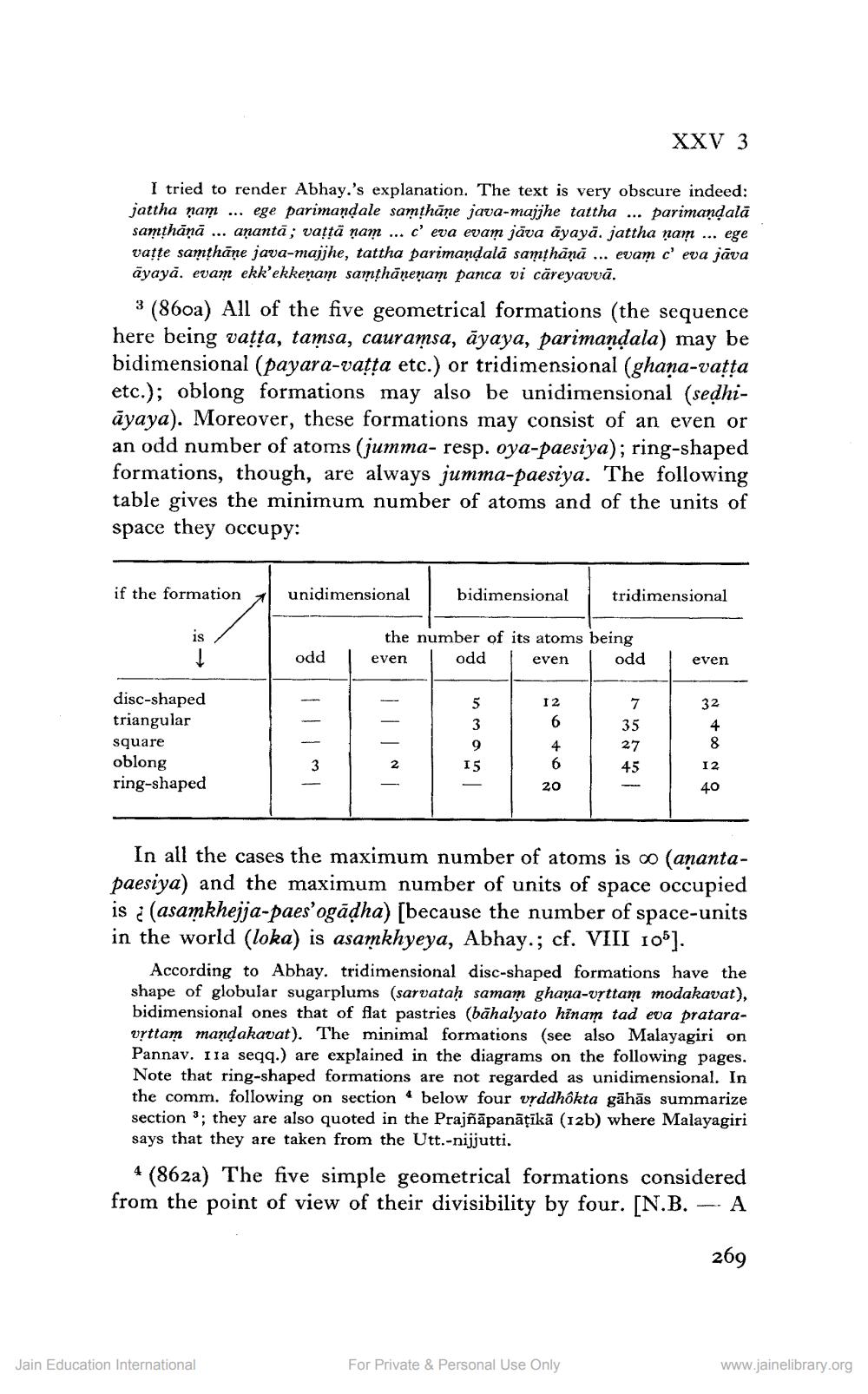________________
I tried to render Abhay.'s explanation. The text is very obscure indeed: jattha nam... ege parimandale samthane java-majjhe tattha ... parimaṇḍalā samṭhāṇā... aṇanta; vaṭṭā nam ... c' eva evam jāva ayaya. jattha nam ... ege vatte samthane java-majjhe, tattha parimandala samṭhānā... evam c' eva java ayaya. evam ekk'ekkenam samthanenam panca vi careyavvā.
3 (860a) All of the five geometrical formations (the sequence here being vaṭṭa, tamsa, cauramsa, ayaya, parimandala) may be bidimensional (payara-vaṭṭa etc.) or tridimensional (ghana-vaṭṭa etc.); oblong formations may also be unidimensional (seḍhiayaya). Moreover, these formations may consist of an even or an odd number of atoms (jumma- resp. oya-paesiya); ring-shaped formations, though, are always jumma-paesiya. The following table gives the minimum number of atoms and of the units of space they occupy:
if the formation
is
↓
disc-shaped triangular
square
oblong ring-shaped
unidimensional
odd
3
Jain Education International
bidimensional
INITI
the number of its atoms being
even
odd
even
odd
15000
20 +00
73527 5
4
20
XXV 3
tridimensional
45
For Private & Personal Use Only
even
2 +∞ 20
32
12
In all the cases the maximum number of atoms is co (anantapaesiya) and the maximum number of units of space occupied is (asamkhejja-paes'ogāḍha) [because the number of space-units in the world (loka) is asamkhyeya, Abhay.; cf. VIII 105].
40
According to Abhay. tridimensional disc-shaped formations have the shape of globular sugarplums (sarvataḥ samam ghana-vṛttam modakavat), bidimensional ones that of flat pastries (bahalyato hinam tad eva prataravrttam mandakavat). The minimal formations (see also Malayagiri on Pannav. 11a seqq.) are explained in the diagrams on the following pages. Note that ring-shaped formations are not regarded as unidimensional. In the comm. following on section below four vṛddhôkta gāhās summarize section; they are also quoted in the Prajñāpanāṭīkā (12b) where Malayagiri says that they are taken from the Utt.-nijjutti.
4 (862a) The five simple geometrical formations considered from the point of view of their divisibility by four. [N.B. -
-A
269
www.jainelibrary.org




